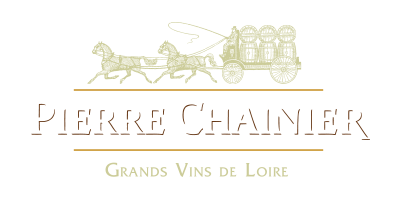THE SOILS
The Grapes and soil areas are representative of the Loire Valley and its global reputation.
In Muscadet, The land is granity, sandy OR slaty. But he is particularly fond of light, stony soil of low hills of the Armorican Massif. In this oceanic climate, both mild and humid, it grows relatively easily.
In Anjou, the underlaying soil is composed mainly of slates, sandstone and carbonaceous shales Armorican; there are also eruptive vein spilites, rhyolites, phtanites.
In Touraine, the basement consists of chalk limestone of the Paris basin with clay and limestone or clay with flints; the terraces of the Loire and Vienna are made of sand and gravel. The Cher are in turn often made of flint clay soils.
GRAPE VARIETY
White Grape
Chenin Blanc is used 100% for still Vouvray and traditional methods. Its origin is not known but it has adapted so well to the Loire Valley for years that it can be considered a native variety. Also known as Pineau de la Loire, a strong and early white grape of the Loire Valley is grown in Touraine and Vouvray in particular but also in the Saumur and Anjou. Chenin gives fruity wines with vivacity contributes to aging potential. It can be fermented in effervescent or still wine dry, semi-dry or sweet. Noble rot easily develops on its bays and provides great sweet wines, characterized by fine acidity that gives them freshness.
Sauvignon Blanc
This white grape is originally a very aromatic dry wines, with nuances of boxwood, black currant buds and, depending on the soil, white flowers and citrus. Very fragile, this variety is sensitive to terroir as the climate. In the Loire Valley, it is vinified alone in most appellations (Touraine, Sancerre, Pouilly-Fumé ...) It allows the development of Touraine elegant and fruity white wines.
Sauvignon Rose
Also called "Fié de Gris", this typical Loire grape variety has almost disappeared. After a careful vinification, it offers a golden wine with very bright dress, soft round and long finish, with very particular flavors of beeswax, slightly muscaty.
Red Grape
Gamay, Cabernet Franc and Côt are mandatory elements in developing AOP Touraine Amboise town red and rose in proportions that differ from one winery to another. Regarding regional AOP Touraine, the assembly of the three blends is not mandatory and each variety can also express their aromatic potential individually in a bottle
Cabernet Franc
These black grapes originally from Bordeaux, spread around the world. In the Loire Valley, it is called "Breton". Often vinified alone, it gives character to many Touraine wines (Chinon, Bourgueil ...). This variety is originally red and rosé wines moderately tannic and very fragrant, reminiscent of raspberry and violet.
Côt
Also known as Malbec. Black grape South-West of France became the main red grape of Argentina. In Touraine, Malbec is called Côt. It is vinified alone or blended with Gamay and Cabernet. It provides colored wines, aromatic and full bodied.
Gamay
Particularly prevalent in the Beaujolais and Touraine, this black grape variety offers fruity, easy to drink and pleasant vivacity, usually short or medium custody. It may be surprising and original when it is used in connection with the Cabernet or Côt.
Pineau d'Aunis
A black grape of the Loire Valley, producing little colored wines, with peppery aromas, once popular among the kings of France and England. it fell off in favor of the Cabernet Franc but still in between the assembly of some red or rosé Touraine.
Pinot Noir
Black grape behind the great red wines of Burgundy. Unproductive but highly qualitative, it provides wines with nice color though not intense. Their bouquet of cherry and red and black fruits evolves with time to cherry water spirits, game and leather. Early maturity allows Pinot Noir to produce wines of great finesse.






